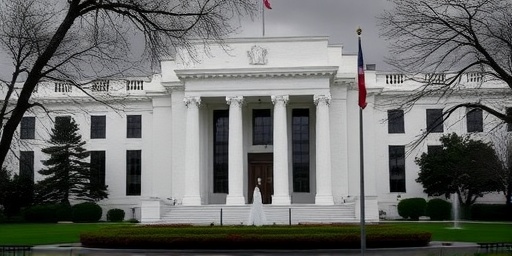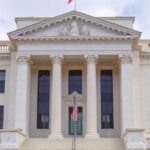In a move that’s sending ripples through global financial markets, the US Federal Reserve has indicated a potential interest rate cut as early as December, buoyed by the latest Consumer Price Index (CPI) data showing inflation cooling to 2.4%. This dovish signal from the central bank comes amid signs of easing price pressures, offering a glimmer of relief to borrowers and investors alike. The announcement has already sparked a rally in stock markets, with major indices climbing as confidence grows in a softer monetary policy ahead.
CPI Report Highlights Cooling Inflation Trends
The Bureau of Labor Statistics released its September CPI report on Thursday, revealing that the headline inflation rate stood at 2.4% year-over-year, down from 2.5% in August. This marks the lowest level since February 2021 and brings the figure tantalizingly close to the Federal Reserve‘s long-standing target of 2%. Core CPI, which excludes volatile food and energy prices, also moderated to 3.2%, signaling broader disinflationary forces at play.
Key drivers behind this slowdown include a 0.2% monthly decline in energy prices and subdued increases in shelter costs, which have been a persistent thorn in the side of inflation fighters. Food prices rose by just 0.1% month-over-month, while used vehicle prices continued their downward trajectory, falling 0.5%. Economists had anticipated a slight uptick to 2.6%, making the data a pleasant surprise and reinforcing the narrative of a softening inflationary environment.
“The CPI figures underscore that our efforts to tame inflation are bearing fruit,” said Fed Chair Jerome Powell during a press briefing following the Federal Open Market Committee (FOMC) meeting. Powell emphasized that while progress is evident, the central bank remains vigilant against any resurgence in price pressures. This data point is crucial as it provides the Federal Reserve with the flexibility to pivot toward rate cuts without reigniting inflationary fears.
Historically, CPI has been a pivotal metric for the Federal Reserve’s interest rate decisions. Since the post-pandemic surge that peaked at 9.1% in June 2022, inflation has been on a steady descent, albeit with occasional hiccups. The current 2.4% reading not only alleviates concerns over stagflation but also aligns with projections from the International Monetary Fund, which forecasted US inflation averaging 2.5% for the year.
Fed’s Dovish Pivot: December Rate Cut on the Horizon
Responding to the favorable CPI data, Federal Reserve officials struck a notably dovish tone in their latest statements. For the first time in over two years, the FOMC minutes hinted at a possible 25-basis-point reduction in the federal funds rate at its December 17-18 meeting. This would mark the first cut since the aggressive hiking cycle began in March 2022, when rates were lifted from near-zero to the current 5.25%-5.50% range.
Several policymakers, including Vice Chair Lael Brainard and New York Fed President John Williams, expressed confidence that inflation is on a sustainable path toward the 2% goal. “With the labor market remaining resilient and inflation abating, it’s prudent to consider easing monetary policy to support economic growth,” Williams noted in a recent interview. The dot plot from the September FOMC projections showed a median expectation of two rate cuts by the end of 2024, up from one anticipated in June.
This shift in rhetoric represents a delicate balancing act for the Federal Reserve. On one hand, prolonged high interest rates have successfully curbed inflation but at the cost of higher borrowing expenses for consumers and businesses. On the other, premature cuts could undermine the hard-won progress. Market futures now price in a 75% probability of a December cut, according to CME FedWatch Tool data, a stark contrast to the 20% odds just a month ago.
The Federal Reserve’s dual mandate of maximum employment and price stability hangs in the balance here. Unemployment remains low at 4.1%, but job growth has slowed, with nonfarm payrolls adding only 142,000 positions in August—below expectations. This cooling labor market, combined with the CPI trends, is pushing the Fed toward a more accommodative stance on interest rates.
Markets Rally as Investor Confidence Surges
Wall Street wasted no time reacting to the Federal Reserve’s signals and the benign CPI report. The S&P 500 surged 1.2% on Friday, closing at a record high of 5,762 points, while the Dow Jones Industrial Average climbed 450 points, or 1.1%. Tech-heavy Nasdaq jumped 1.5%, led by gains in rate-sensitive sectors like real estate and consumer discretionary.
Bond markets also reflected the optimism, with the 10-year Treasury yield dipping to 3.78%, its lowest in over a month. This decline eases pressure on mortgage rates, which have hovered around 6.5% for much of the year. Investors are betting that lower interest rates will unlock pent-up demand in housing and boost corporate earnings through cheaper financing.
“The Fed’s dovish lean is a game-changer for equities,” remarked Michael Block, chief strategist at Rhino Trading Partners. “With inflation in check via the latest CPI, the path is clear for rate relief, which should propel stocks higher into year-end.” Indeed, the VIX volatility index fell to 18.5, indicating reduced market jitters and heightened risk appetite.
Broader implications extend to currency markets, where the US dollar index dropped 0.8% against a basket of major currencies. This weakening greenback could benefit US exporters but might temper the enthusiasm of international investors. Cryptocurrencies, often correlated with risk assets, saw Bitcoin climb above $63,000, its highest since August, as lower rates typically fuel speculative investments.
From a sectoral perspective, financial stocks like JPMorgan Chase rose 2.1%, anticipating higher loan volumes with easing interest rates. Conversely, energy shares lagged as oil prices softened amid the economic optimism. Overall, the market rally underscores how intertwined Federal Reserve policy is with investor sentiment, with the CPI data acting as a catalyst for renewed bullishness.
Economic Ramifications for Households and Industries
For everyday Americans, the prospect of Federal Reserve rate cuts translates to tangible relief. Credit card rates, which average 21.5% according to the latest Federal Reserve data, could see modest declines, saving households hundreds in annual interest. Auto loans, another high-rate category at 7.2%, might follow suit, potentially stimulating vehicle sales that have stagnated this year.
Homeowners and prospective buyers stand to gain the most. The National Association of Realtors reported existing home sales at a 3.9 million annual pace in August, the slowest since 1995. With mortgage rates potentially falling below 6% by early 2025, experts predict a thaw in the housing freeze, unlocking affordability for millennials and Gen Z entrants.
Businesses, too, are recalibrating strategies in light of cooling inflation and prospective interest rate reductions. Small enterprises, burdened by the Fed’s hiking spree, have faced elevated refinancing costs—corporate borrowing rates hit 6.8% in Q2. A dovish pivot could lower these hurdles, encouraging capital expenditures and hiring. The NFIB Small Business Optimism Index rose to 91.3 in September, its highest in six months, citing improved inflation outlooks.
However, not all sectors are cheering. Retailers like Walmart have navigated sticky inflation in groceries, but the 2.4% CPI print suggests price stabilization ahead. Manufacturers, per the ISM report, saw their prices index dip to 48.1, indicating deflationary pressures that could squeeze margins if not offset by volume growth. The Federal Reserve’s actions will be pivotal in ensuring a soft landing, where inflation moderates without tipping into recession.
Globally, the US inflation trajectory influences trading partners. The European Central Bank, facing its own 2.4% eurozone inflation rate, may align with Fed moves, while emerging markets like India and Brazil watch closely for capital flow shifts. The interplay of US interest rates and inflation metrics continues to shape the world economy.
Outlook: Key Indicators and Fed’s Next Moves
Looking ahead, the Federal Reserve’s path will hinge on incoming data. October’s CPI release on November 13 will be scrutinized for any reversal in the disinflation trend, followed by the November FOMC meeting on November 6-7. Payrolls and GDP figures will also weigh heavily; Q3 GDP grew at a robust 2.8% annualized rate, but Q4 estimates vary from 1.8% to 2.5%.
Policymakers have signaled quarterly projections updates in December, where the dot plot could confirm multiple cuts into 2025. If CPI continues to ease toward 2%, analysts like those at Goldman Sachs project three 25-basis-point reductions next year, bringing the fed funds rate to around 4%. This trajectory would support sustained growth while keeping inflation in check.
Potential risks loom, including geopolitical tensions in the Middle East that could spike energy prices, or a softening labor market prompting faster easing. Fed Governor Michelle Bowman cautioned, “We must remain data-dependent; a single CPI print doesn’t dictate policy.” Investors are advised to monitor retail sales and producer price index (PPI) for corroborating signals.
In the longer term, this episode reinforces the Federal Reserve’s role as economic steward. By signaling flexibility on interest rates amid cooling inflation, the central bank aims to foster stability. As markets digest these developments, the focus shifts to how policymakers navigate the final stretch of 2024, potentially ushering in an era of normalized rates and renewed prosperity.









